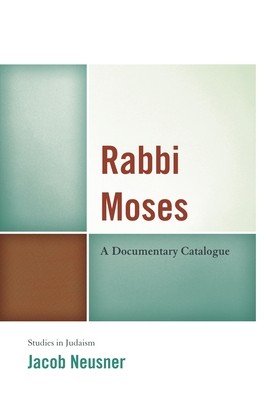
- We will send in 10–14 business days.
- Author: Jacob Neusner
- Publisher: University Press of America
- ISBN-10: 0761860916
- ISBN-13: 9780761860914
- Format: 15.2 x 22.6 x 1 cm, softcover
- Language: English
- SAVE -10% with code: EXTRA
Reviews
Description
This book is an exercise in the systematic recourse to anachronism as a theological-exegetical mode of apologetics. Specifically, Neusner demonstrates the capacity of the Rabbinic sages to read ideas attested in their own day as authoritative testaments to - to them - ancient times. Thus, Scripture was read as integral testimony to the contemporary scene. About a millennium - 750 B.C. E. to 350 C. E. - separates Scripture's prophets from the later sages of the Mishnah and the Talmud. It is quite natural to recognize evidence for differences over a long period of time. Yet Judaism sees itself as a continuum and overcomes difference. The latecomers portray the ancients like themselves. "In our image, after our likeness" captures the current aspiration. The sages accommodated the later documents in their canon by finding the traits of their own time in the record of the remote past. They met the challenges to perfection that the sages brought about. Of what does the process of harmonization consist? To answer that question the author surveys the presentation of the prophets by the rabbis, beginning with Moses. To overcome the gap, Rabbinic sages turn Moses into a sage like themselves. The prophet performs wonders. The sage sets forth reasonable rulings. The conclusion expands on this account of matters to show the categorical solution that the sages adopted for themselves, and that is the happy outcome of the study.
EXTRA 10 % discount with code: EXTRA
The promotion ends in 7d.08:40:13
The discount code is valid when purchasing from 10 €. Discounts do not stack.
- Author: Jacob Neusner
- Publisher: University Press of America
- ISBN-10: 0761860916
- ISBN-13: 9780761860914
- Format: 15.2 x 22.6 x 1 cm, softcover
- Language: English English
This book is an exercise in the systematic recourse to anachronism as a theological-exegetical mode of apologetics. Specifically, Neusner demonstrates the capacity of the Rabbinic sages to read ideas attested in their own day as authoritative testaments to - to them - ancient times. Thus, Scripture was read as integral testimony to the contemporary scene. About a millennium - 750 B.C. E. to 350 C. E. - separates Scripture's prophets from the later sages of the Mishnah and the Talmud. It is quite natural to recognize evidence for differences over a long period of time. Yet Judaism sees itself as a continuum and overcomes difference. The latecomers portray the ancients like themselves. "In our image, after our likeness" captures the current aspiration. The sages accommodated the later documents in their canon by finding the traits of their own time in the record of the remote past. They met the challenges to perfection that the sages brought about. Of what does the process of harmonization consist? To answer that question the author surveys the presentation of the prophets by the rabbis, beginning with Moses. To overcome the gap, Rabbinic sages turn Moses into a sage like themselves. The prophet performs wonders. The sage sets forth reasonable rulings. The conclusion expands on this account of matters to show the categorical solution that the sages adopted for themselves, and that is the happy outcome of the study.


Reviews